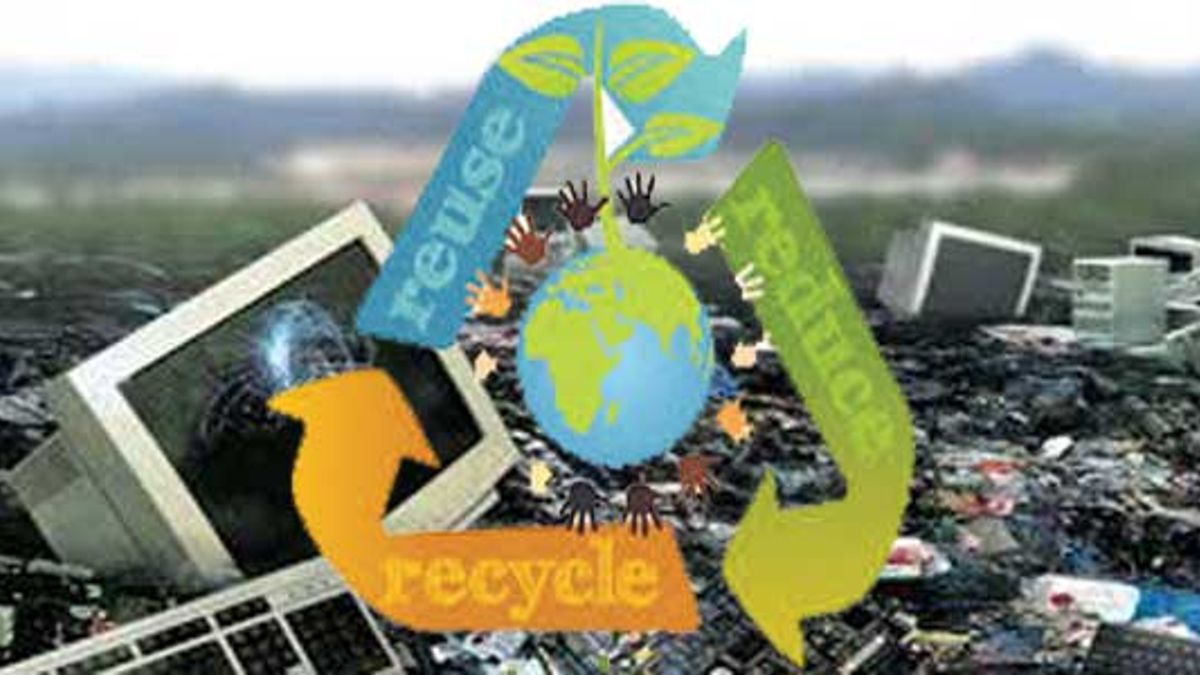What is E-waste?
E waste stands for Electronic Waste. It mainly consists discarded electronic equipment that has either become obsolete or broken. In today’s world, where technological devices are rapidly upgrading , unwanted electronic disposal has become a greater problem.
The most prominent examples would be smartphones and laptops or computers that are always coming in newer models. Hence, the old ones, or their parts get thrown away rather than repaired.
“In 2016, the estimated value of recoverable materials in global e-waste was $64.6 billion, but only 20 percent of it was properly recycled to enable recovery of the valuable materials. Much of the rest is dumped in landfills where toxic chemicals can leach from the e-waste and end up contaminating the water supply.”
Renee Cho, colombia.edu
How is it hazardous
Electronic appliances when disposed, is extremely toxic because of the chemicals that leach out when electronic appliances are buried in the ground. These include toxins from lead, cadmium, chromium, brominated flame retardants, or polychlorinated biphenyls (PCBs).
The World Health Organization has recognized health risks that arise from direct contact or inhalation of such fumes. These toxic fumes also harm the environment when it is collected in water, soil, or food.
Negative impact on water
Disposed electronic appliances can be detrimental for underground water streams, by polluting it and making it inaccessible or unhealthy for its users. Mostly, the animals that depend on water from such channels are killed.
This leads to an imbalance in the ecosystem. Even humans face a huge challenge for healthy water, with carcinogens like lead, barium and mercury.
Sea-animals, and the destruction of their livelihood is a must discussed issue in the modern world.
Air Pollution
When electronic waste is burnt, hydrocarbons release into the air, which contributes to the greenhouse effect, which in turn results in global warming, according to scientists.
Activities like the burning of copper wires can be harmful air pollutants too. Similar effects come from the stripping of gold-plated computer parts. These lead to serious heart and breathing disorders among humans.
Efforts to manage such waste
MINIMIZE YOUR WASTE
First of all, think over the need for new gadgets. Avoid over-crowding your life with useless gadgets that you must dispose of in short periods of time, once you can afford a new model.
Maintain your electronic devices, and remember to avoid over-charging them! When you do dispose of your electronic appliances, give all possible parts to social programs, and give the batteries to a recycling effort.

RECYCLE
Components of electronic waste are separated and sent for recycling. The components include:
- Plastic
- Metal
- Glass
- Circuit boards
- Ink Cartridges
- Batteries
Recycling retrieves an enormous quantity of metals while reducing landfill space for dumping waste. At least 75 pounds of gold, 772 pounds of silver, 35,000 pounds of copper, and 33 pounds of palladium can be recovered from recycling one million cell phones.
The entire recycling process includes a number of steps. These are:
- Collection and transportation
- Shredding
- Sorting and separation
- Preparation for sellable commodities
Retrieving metal from recycling is important for developing countries like India where e-waste is skyrocketing. It is also important for countries with little mineral resource.

SAFE DISPOSAL
Disposal of e-waste is challenging, considering the huge amount of chemicals it produces. While you plan to buy a new electronic gadget, sell your old one to the manufacturer, or give it away to recycling agencies, or if it is still usable, be sure to give it to someone who might need it.
There are a number of agencies that recycle electronic gadgets, for example:
“Attero is a Bengaluru-based e-waste recycler and metal extraction startup founded by Nitin Gupta and Rohan Gupta in 2007. It is one of the first e-waste recyclers to be registered with the Central Pollution Control Board (CPCB), under the Ministry of Environment and Forests, Government of India.”
www.yourstory.com
Read more at: https://yourstory.com/socialstory/2020/10/india-companies-managing-international-ewaste-day-recycle
Here is a video of how a company in India transformed e-waste management:
Read more:












































